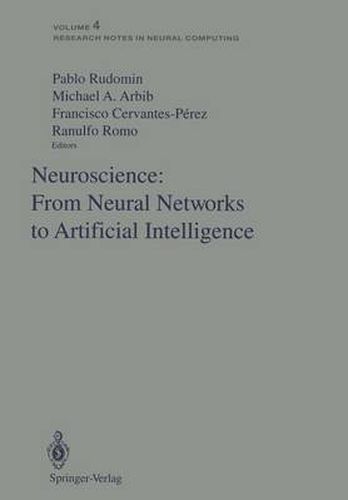Readings Newsletter
Become a Readings Member to make your shopping experience even easier.
Sign in or sign up for free!
You’re not far away from qualifying for FREE standard shipping within Australia
You’ve qualified for FREE standard shipping within Australia
The cart is loading…






This title is printed to order. This book may have been self-published. If so, we cannot guarantee the quality of the content. In the main most books will have gone through the editing process however some may not. We therefore suggest that you be aware of this before ordering this book. If in doubt check either the author or publisher’s details as we are unable to accept any returns unless they are faulty. Please contact us if you have any questions.
The Central Nervous System can be considered as an aggregate of neurons specialized in both the transmission and transfomation of information. Information here has been used for many purposes, but the most important one is probably to generate a representation of the extenal world that allows the organism to react properly to changes in its extenal environment. These functions range from such basic ones as detection of changes that may lead to tissue damage and eventual destruction of the organism and the implementation of avoidance reactions to more elaborate representations of the extemal world implying recognition of shapes, sounds and textures as the basis of planned action or even reflection. The question is, how can we hope to understand the complexity inherent in this range of functionalities? One of the distinguishing features of the last two decades has been the availability of computational power that has impacted the many areas of science concerned with this question. An effort has been made within this book to cross boundaries and to have active scientists from different backgrounds and disciplines explain the basic principles which guide their investigations with the hope that this will lay the basis for a future collaborative effort to understand the principles of neural networks.
$9.00 standard shipping within Australia
FREE standard shipping within Australia for orders over $100.00
Express & International shipping calculated at checkout
This title is printed to order. This book may have been self-published. If so, we cannot guarantee the quality of the content. In the main most books will have gone through the editing process however some may not. We therefore suggest that you be aware of this before ordering this book. If in doubt check either the author or publisher’s details as we are unable to accept any returns unless they are faulty. Please contact us if you have any questions.
The Central Nervous System can be considered as an aggregate of neurons specialized in both the transmission and transfomation of information. Information here has been used for many purposes, but the most important one is probably to generate a representation of the extenal world that allows the organism to react properly to changes in its extenal environment. These functions range from such basic ones as detection of changes that may lead to tissue damage and eventual destruction of the organism and the implementation of avoidance reactions to more elaborate representations of the extemal world implying recognition of shapes, sounds and textures as the basis of planned action or even reflection. The question is, how can we hope to understand the complexity inherent in this range of functionalities? One of the distinguishing features of the last two decades has been the availability of computational power that has impacted the many areas of science concerned with this question. An effort has been made within this book to cross boundaries and to have active scientists from different backgrounds and disciplines explain the basic principles which guide their investigations with the hope that this will lay the basis for a future collaborative effort to understand the principles of neural networks.